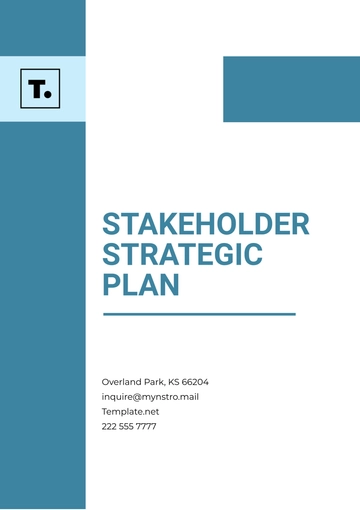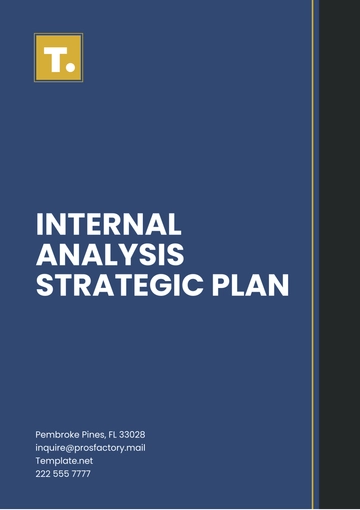Free International Sales Strategic Plan

Prepared by: [Your Name]
Date: January 5, 2060
I. Executive Summary
The International Sales Strategic Plan for [Your Company Name] is designed to enhance the company’s global footprint by strategically entering and expanding into high-potential markets, including Southeast Asia, South America, and the Middle East, between 2060 and 2065. With a focus on adapting to local demands and leveraging digital sales channels, [Your Company Name] aims to achieve substantial revenue growth, build brand recognition, and strengthen relationships with local partners and distributors. By aligning goals with regional insights and ensuring adaptable strategies, [Your Company Name] will establish a robust international presence.
II. Market Analysis
A. Target Market Overview
Extensive research has identified key regions for expansion:
Southeast Asia: Target countries include Indonesia, Vietnam, and Thailand, due to growing consumer demand and expanding middle-class populations.
South America: Primary focus on Brazil and Argentina, with an emphasis on regions experiencing rapid economic growth and increased consumer purchasing power.
Middle East: Key countries include the United Arab Emirates and Saudi Arabia, where rising disposable income and demand for premium goods present high-growth opportunities.
B. Competitive Landscape
Our primary competitors in these regions are Competitor A and Competitor B. Competitor A holds a significant market share in Southeast Asia through localized marketing and a well-established distribution network. Meanwhile, Competitor B has captured a considerable portion of the premium segment in the Middle East. Our competitive advantage will focus on differentiating through localized digital marketing and offering flexible pricing solutions in response to local demand.
C. Customer Profiles
Southeast Asia: Young, tech-savvy consumers aged 20-40 with strong preferences for mobile and online shopping.
South America: Urban professionals aged 25-50, highly responsive to brand authenticity and eco-friendly practices.
Middle East: High-income consumers aged 30-55, with a preference for luxury goods and a high level of brand loyalty.
III. Sales Goals & Objectives
Revenue Target: Increase international sales revenue by 30% annually from 2060 to 2065, reaching $500 million in annual revenue by the end of 2065.
Market Share: Capture at least 10% market share in each targeted region by the end of 2065.
Customer Acquisition: Attain 50,000 new customers in Southeast Asia, 35,000 in South America, and 20,000 in the Middle East within the first year of entry.
Brand Recognition: Position [Your Company Name] as a top 5 recognized brand in each region by 2065, leveraging digital campaigns and local partnerships.
IV. Sales Strategy
A. Market Entry Approach
Direct Sales Teams and Partnerships: Establish on-ground sales teams in Brazil and Indonesia to directly engage with local clients. In the Middle East, form partnerships with reputable distributors like Distributor X and Distributor Y for market penetration.
Localized Marketing Campaigns: Run targeted social media campaigns through platforms popular in each region, such as TikTok in Southeast Asia, Instagram in South America, and Snapchat in the Middle East. Campaigns will feature culturally relevant messaging and influencer collaborations.
E-commerce Integration: Implement region-specific e-commerce websites and partner with local online marketplaces, such as Lazada in Southeast Asia and Mercado Libre in South America, to facilitate online sales.
B. Pricing Strategy
Adapt pricing based on economic conditions and purchasing power:
Southeast Asia: Competitive pricing with bulk-purchase incentives.
South America: Mid-tier pricing with discounts for subscription-based purchases.
Middle East: Premium pricing for high-end products, with limited-time offers for loyal customers.
C. Distribution Channels
Utilize both online and offline channels to ensure product accessibility:
Southeast Asia: Partner with local retail chains such as Retailer A and online platforms like Shopee.
South America: Establish connections with specialty stores and expand through local grocery retailers.
Middle East: Secure shelf space in high-end retail outlets and collaborate with luxury malls in Dubai and Riyadh.
V. Budget & Resource Allocation
Allocate $20 million annually across all regions, with planned expenses as follows:
Marketing and Advertising: 40% for digital and in-store campaigns.
Sales Team Hiring & Training: 25%, focusing on cultural training and product knowledge.
Technology and Infrastructure: 20% for e-commerce setup and localized website management.
Partnerships and Alliances: 15% for onboarding and maintaining local distributors.
VI. Risk Assessment
A. Regulatory and Compliance Risks
Monitor each region’s evolving regulations, such as data protection laws in Southeast Asia and import restrictions in South America. A compliance officer will review operations quarterly to ensure alignment.
B. Economic and Political Risks
Plan for currency volatility in South America by using currency hedging strategies. Additionally, a dedicated risk assessment team will evaluate political shifts in the Middle East and make adjustments as needed.
C. Operational Risks
Establish secondary suppliers in each region to mitigate potential delays due to unforeseen issues like logistics disruptions in Southeast Asia and strikes in South America.
VII. Implementation Timeline
Phased Rollout Plan for 2060-2065:
Period | Milestone |
|---|---|
Q1 2060 | Launch in Indonesia and Brazil with fully operational sales teams and initial marketing campaigns. |
Q3 2060 | Enter the UAE and Saudi Arabia through distributor partnerships. |
Q4 2060 | Evaluate performance and adjust the plan as needed based on initial feedback and sales metrics. |
2061 - 2063 | Expand product range in each region and introduce loyalty programs to enhance customer retention. |
2064 - 2065 | Finalize regional expansion and optimize operations for sustained growth. |
VIII. Performance Metrics
A. Key Performance Indicators (KPIs)
Revenue Growth Rate: Track revenue increases in each target market against annual targets.
Market Penetration Rate: Measure the percentage of the target audience reached within each region.
Customer Retention Rate: Focus on maintaining a retention rate of 70% by implementing loyalty programs and personalized marketing.
Brand Awareness Index: Conduct bi-annual surveys to assess brand recognition and reputation in each market.
B. Evaluation and Adjustments
Quarterly reviews will be held to analyze progress. Adjustments will be made based on sales trends, customer feedback, and market conditions, ensuring that [Your Company Name] achieves its international sales objectives by 2065.
- 100% Customizable, free editor
- Access 1 Million+ Templates, photo’s & graphics
- Download or share as a template
- Click and replace photos, graphics, text, backgrounds
- Resize, crop, AI write & more
- Access advanced editor
Enhance your global sales operations with the International Sales Strategic Plan Template from Template.net. This versatile and editable template is designed to help you strategize and optimize your international sales efforts. Customizable to meet diverse market needs, this template is fully editable in our Ai Editor Tool, making it easy to adapt to your company's global expansion goals.





























